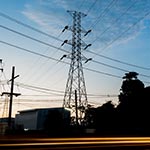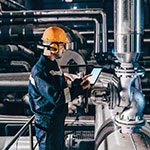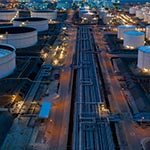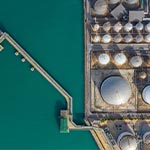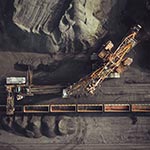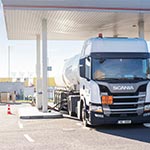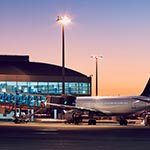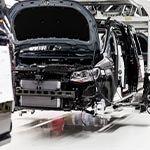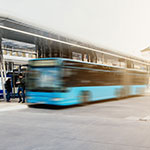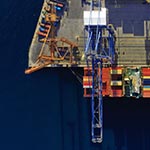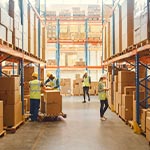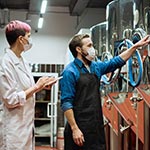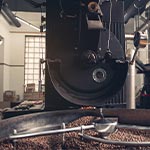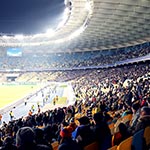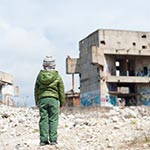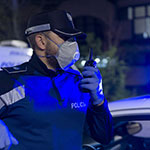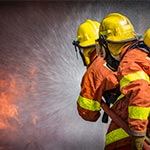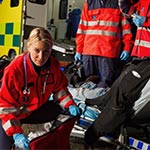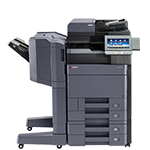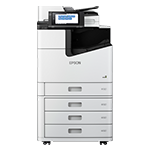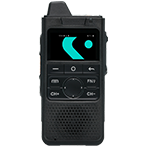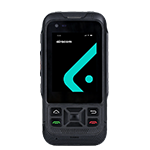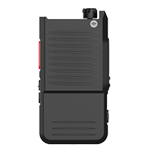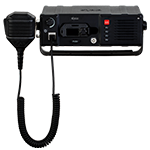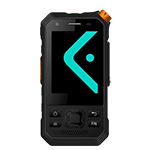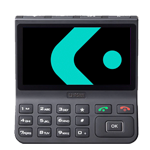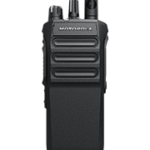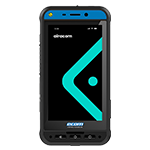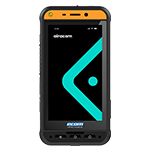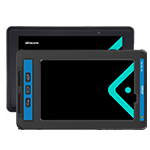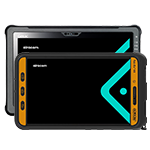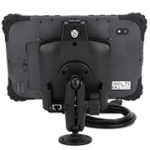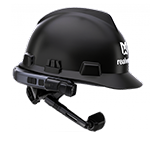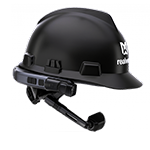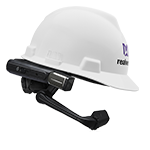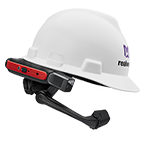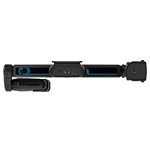KCs Certified
KCs certification for hazardous area devices
KCs certification is a mandatory requirement for products sold in Korea, including those intended for use in hazardous areas.
This certification system is designed to ensure the safety and quality of electrical and electronic equipment used in Korea. In this article, we will provide an overview of the KCs certification system, how it works, and the benefits of obtaining certification.
KCs certification is a product certification system in Korea that is mandatory for certain types of products sold in the country, including mobile devices used in hazardous areas. The system is managed by the Korean Agency for Technology and Standards (KATS) and is designed to ensure the safety and quality of electrical and electronic equipment used in Korea.
What is the KCs system objective?
The KCs system’s objective for hazardous areas in relation to mobile devices and electronic equipment is to ensure the safety and reliability of such equipment used in Korea. The KCs certification process for electrical and electronic equipment used in hazardous areas involves testing and evaluation to ensure that the equipment meets the relevant technical regulations and safety standards established by KATS. The objective is to reduce the risk of accidents and incidents in hazardous areas by ensuring that only safe and reliable equipment is used, which benefits customers in the following areas:
KCs certification is mandatory for certain products sold in Korea, including equipment and devices intended for use in hazardous areas.
This ensures the safety and reliability of electrical and electronic equipment used in Korea.
The certification process involves testing and evaluation to ensure compliance with the technical regulations and safety standards established by KATS.
Obtaining KCs certification for products used in hazardous areas ensures compliance with Korean regulations and reduces the risk of accidents and incidents.
KCs certification provides market access for products in Korea, opening up new business opportunities for manufacturers.
While improving the safety and reliability of electrical and electronic equipment used in hazardous areas, reducing the risk of accidents and incidents.
Where are KCs protective systems and equipment used?
KCs protective systems and equipment are used in hazardous areas in Korea. These areas may include facilities such as petrochemical plants, refineries, mining sites, and other industrial environments where there is a risk of explosion or fire due to the presence of flammable gases, vapours, liquids, or combustible dusts.. Some of the main industries where INMETRO hazardous area devices are used include:
Oil and gas exploration and production facilities
Chemical and petrochemical plants
Pharmaceutical and biotech manufacturing facilities
Food and beverage processing plants
Transportation and storage of hazardous materials
Understanding hazardous areas
Hazardous area classification for INMETRO in Brazil
Like the North American standards, the KCs certification system uses zones and divisions to classify hazardous areas and determine which type of devices should be used in those areas. The classification system used by KCs is similar to the one used in North America and Europe, but there are some differences.
In the KCs system, hazardous areas are classified according to their degree of risk, with Zones 0, 1, and 2 for gas atmospheres and Zones 20, 21, and 22 for dust atmospheres. The classification takes into account the likelihood and duration of the presence of flammable substances in the area. The equipment used in hazardous areas is classified according to its level of protection, with different types of protection designated by the letters “Ex”. For example, Ex d, Ex e, Ex i, Ex m, Ex n, and Ex p are some of the common types of protection. The level of protection required depends on the classification of the hazardous area and the nature of the equipment.
Gas
Zones
Gas groups are divided into subgroups based on the minimum ignition current and maximum experimental safety gap.
Zone 0
Where an explosive atmosphere is continuously present or present for long periods.
Zone 1
Where an explosive atmosphere is likely to occur in normal operation.
Zone 2
an area in which an explosive mixture is not likely to occur in normal operation and if it occurs it will exist only for a short time.
Dust
Zones
Explosive dust atmospheres consist of a mixture of the air with flammable substances in the form of dust or fibres.
Zone 20
An area in which an explosive mixture is continuously present or present for long periods.
Zone 21
An area in which an explosive mixture is likely to occur in normal operation
Zone 22
An area in which an explosive mixture is not likely to occur in normal operation and if it occurs it will exist only for a short time.
Protection
Levels of Protection
The common protection levels designated by the letters “Ex” in the KCs certification system for hazardous areas
Ex d
Flameproof protection is used for equipment that may produce sparks, but the sparks are contained within the device, preventing them from igniting the surrounding atmosphere.
Ex e
Increased safety protection is used for equipment that is not likely to produce sparks, but still requires protection from the surrounding hazardous atmosphere.
Ex i
Intrinsic safety protection is designed to operate at low power levels and does not generate enough energy to cause ignition of the surrounding atmosphere.
Understanding the South Korean legislation on intrinsic safety and hazardous areas with KCs
South Korea has a well-established regulatory framework for ensuring the safety of electrical and electronic equipment used in hazardous areas. The Korean Explosive Atmosphere Safety Act (EASA) sets out the requirements for ensuring the safety of equipment used in hazardous areas, while the KCs certification system provides a mechanism for testing and certifying equipment to ensure compliance with these requirements.
Under the EASA, hazardous areas are classified according to their degree of risk, with Zones 0, 1, and 2 for gas atmospheres and Zones 20, 21, and 22 for dust atmospheres. The level of protection required for electrical and electronic equipment used in these areas is determined by the classification of the hazardous area and the nature of the equipment.
The KCs certification process involves testing and evaluation to ensure that equipment meets the relevant technical regulations and safety standards established by the Korean Agency for Technology and Standards (KATS). Testing and certification bodies must be accredited by KATS to carry out the testing and evaluation required for KCs certification of electrical and electronic equipment used in hazardous areas.
Failure to comply with the South Korean legislation on intrinsically safe and hazardous areas with KCs can result in serious ramifications, including fines, legal action, and damage to reputation. In addition, non-compliance with safety requirements can lead to accidents and incidents in hazardous areas, putting workers and property at risk.
What are the most widely used enterprise mobility devices and equipment used in hazardous areas within South Korea?
In South Korea, with the increasing use of smart digital technologies, IoT, and M2M services, various industries such as oil and gas, petrochemical, chemical, and pharmaceutical, require KCs certification to ensure the safety of workers and assets operating in hazardous areas. Some of the main types of devices that require KCs certification include, but are not limited to:
Intrinsically safe smartphones
Barcode Scanners
RFID Readers
Mobile Printers
Thermal Imaging Cameras
Gas Detection Devices
Temperature Sensors
Humidity Sensors
Pressure Sensors
Flow Sensors
Level Sensors
Position Sensors
Intrinsically Safe CCTV Systems
Intrinsically Safe Cameras
Industrial Communications Devices
Why does South Korea adopt its own KCs standard and not standardise on either the North American CSA or global IECEx certifications?
South Korea is a member of the International Electrotechnical Commission (IEC), allowing it to use the IECEx certification system. However, South Korea has chosen to develop its certification system KCs based on IEC standards to meet its internal regulatory framework and set of unique requirements and challenges when it comes to the use of hazardous area equipment and devices. The KCs certification system is designed to ensure that equipment used in hazardous areas meets the specific technical regulations and safety standards established by the Korean Agency for Technology and Standards (KATS).
Legal Requirements: South Korean companies are required by law to ensure that equipment used in hazardous areas meets the technical regulations and safety standards established by the Korean Agency for Technology and Standards (KATS) and is certified by KCs.
Market Demand: Companies in South Korea have a high demand for KCs certified hazardous area devices, ensuring reliable and safe voice and data collaboration while meeting KATS technical regulations and safety standards.
Economic Benefits: The economic benefits of KCs certification for South Korea include increased exports of certified equipment, improved worker safety, and reduced incidents and accidents in hazardous areas.
How are KCs certifications awarded to device manufacturers for equipment used in hazardous areas?
To obtain a KCs intrinsically safe certificate, manufacturers must submit their equipment to a testing and certification body accredited by KATS. The equipment is then rigorously tested to ensure it meets the technical regulations and safety standards established by KATS. If the equipment passes the testing, it is awarded the KCs certificate, demonstrating that it is safe to use in hazardous areas in South Korea.
Submit Application: Manufacturers of equipment that need to be certified by KCs must submit their equipment to a testing and certification body accredited by the Korean Agency for Technology and Standards (KATS).
Equipment Testing: Equipment is rigorously tested to ensure it meets the technical regulations and safety standards established by KATS: The testing and certification body will then rigorously test the equipment to ensure it meets the technical regulations and safety standards established by KATS for hazardous areas.
Certification Award: If the equipment passes the testing and meets the technical regulations, it is awarded the KCs certificate.
Global Certifications
Global certification schemes for electronic equipment designed for use across hazardous areas
Mobile devices and communications equipment reliably tested and certified for safe operation across major industries around the world. Each industry requires focused expertise to ensure product certification that adheres to strict national and international standards.
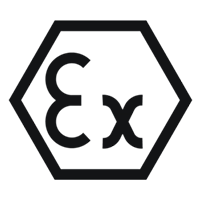
ATEX Certified.
The European standard for the safe use of equipment where there is potential for an explosive atmosphere present.

IECEx Certified.
The internationally accepted standard by organisations for the safe use of equipment within hazardous areas.
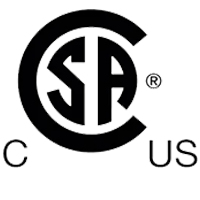
CSA Certified.
The Canadian standard is widely adopted by companies in North America and meets North American Standards.

EAC Ex Certified.
Is the Eurasian Conformity certification for organisations operating within the EAEU, including Russia.

InMetro Certified.
Accreditation body of Brazil. Equipment must conform to INMETRO standards for use in hazardous areas.

JNIOSH Certified.
The Japanese standard and certification from the National Institute of Occupational Safety and Health.

SANS Certified.
SANS is the South African National Accreditation System which governs the use of hazardous area devices.

